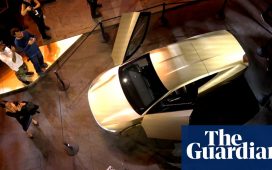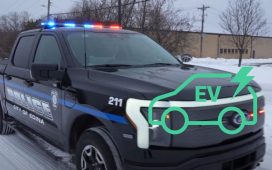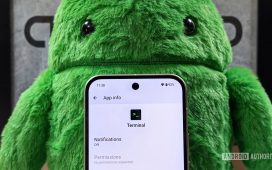When discussing electric vehicles (EVs), certain acronyms like V2L, V2G, and V2H come into play. These terms represent different types of bidirectional charging technologies, which allow EVs not only to charge their batteries but also to send power back to homes, devices, or even the electrical grid.
Why bidirectional charging is important
Bidirectional charging has gained prominence in the United States, especially during emergencies. In natural disasters like hurricanes, some households have relied on stored energy from their electric vehicles to keep critical devices powered during extended outages.
A real-world example occurred in July, when Hurricane Beryl devastated parts of the Caribbean, Texas, and Louisiana, leaving hundreds of thousands without power. While many turned to traditional generators, some EV owners utilized bidirectional charging to supply electricity to their homes. With Hurricane Milton, predicted to be one of the most severe in a century, heading towards Florida, this technology could prove crucial once again.
Bidirectional charging essentially turns EVs into large portable batteries, much like the power banks used for mobile devices, but on a much larger scale. This feature demonstrates the versatility of EVs and their importance during emergencies.
How long can an electric vehicle power a home?
In emergency situations like Hurricane Beryl, some EV owners managed to power their homes for several days. EVs with battery capacities ranging from 60 to 100 kWh typically lost around 10% of their charge per day. This allowed them to provide energy for up to a week.
EV safety features ensure that power stops being supplied when battery levels drop below 20%, though users can adjust the settings to maintain a higher minimum, such as 30% or 50%, depending on their needs. The larger the battery, the more days it can power a home, if it remains fully charged.
California’s push for bidirectional charging
In a landmark decision, California recently passed a law signed by Governor Gavin Newsom that could require all new EVs sold in the state to include bidirectional charging capabilities. While this is not an immediate mandate, it gives state officials the authority to make this feature mandatory in the future.
The legislation allows California to impose this requirement on any class of electric vehicle if bidirectional charging offers clear benefits to both owners and the electric grid. The law also recognizes that EV batteries represent a valuable energy storage resource, which could support the grid more flexibly and affordably.
What is bidirectional charging?
Bidirectional charging enables EVs to not only recharge but also provide energy to other devices or the grid. There are three main types of bidirectional charging:
- V2L (Vehicle to Load): Allows EVs to power appliances by connecting them directly to the vehicle.
- V2G (Vehicle to Grid): Enables EVs to send power back to the grid to help balance energy demand.
- V2H (Vehicle to Home): Allows EVs to supply energy to a home, particularly useful during blackouts.
These features transform EVs into mobile power sources, enhancing their utility beyond transportation.
Challenges for automakers
While the benefits of bidirectional charging are clear, only a few EVs currently offer this feature. Automakers face cost and compatibility challenges when integrating this technology, as it requires updates to both vehicle infrastructure and charging systems. Models like the Hyundai Ioniq 5 and 6, Kia EV6, and Dacia Spring include V2L capabilities, allowing them to power small appliances. Other manufacturers, like Renault, have introduced V2L and V2G in their R5 model, offering up to 3.7 kW of power.
Chinese brands like BYD and Xpeng are also integrating bidirectional charging, and even some plug-in hybrids, such as the DSFK E5, MG HS, and BYD Seal U DM-I include this feature.
In the United States, several exclusive EVs now come with bidirectional charging, including General Motors’ Ultium battery models, the Lucid Air, Ford F-150 Lightning, and Tesla Cybertruck, which can supply up to 9.6 kW via V2L and 11.5 kW via V2H. Meanwhile, Ford’s European models, like the Mustang Mach-E and the Explorer, do not yet offer this technology, but Tesla aims to incorporate it across its fleet by 2025.
Consumer benefits and the future of EVs
For consumers, bidirectional charging offers many advantages. In emergencies, EVs can act as backup power sources for essential devices, and with V2G, owners can even receive financial compensation for sending power back to the grid.
As more states consider mandating this technology, electric vehicles could play a pivotal role in energy management for homes and communities. The rise of renewable energy sources, like solar and wind, makes the flexibility of bidirectional charging even more important for balancing energy supply and demand.
While not yet a standard feature, bidirectional charging is expected to become more common in the future. States like California are leading the way, and as legislation evolves, automakers will likely be required to integrate this feature into new models.
Bidirectional charging represents a significant advancement for electric vehicles, enhancing their role not only as eco-friendly transportation but also as critical energy management tools in times of need. As this technology becomes more widespread, it will play a key role in building a more efficient, flexible energy infrastructure in the United States.









